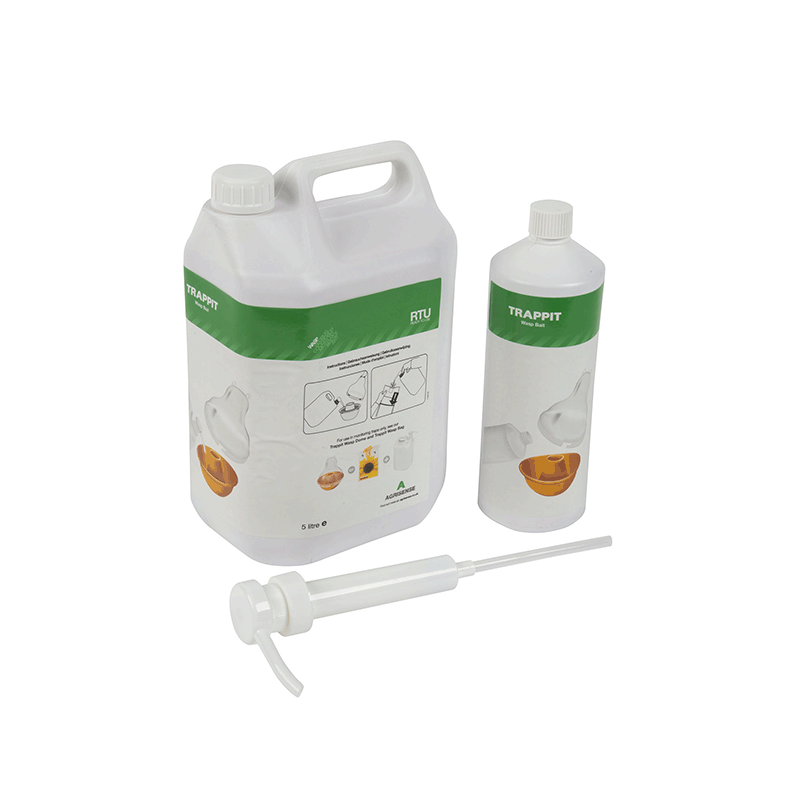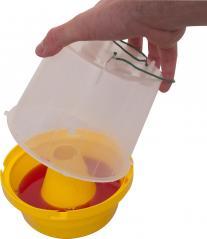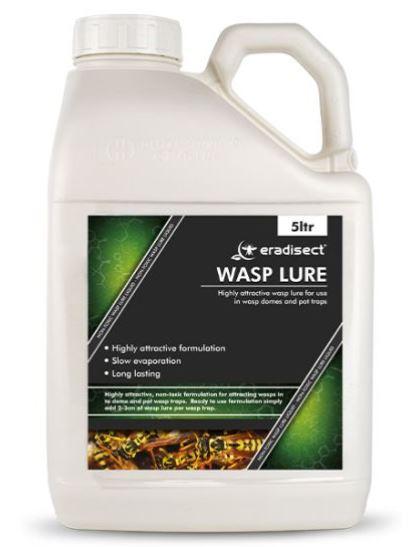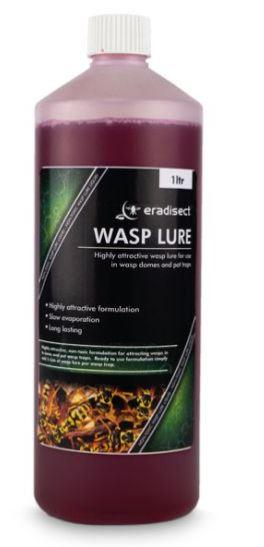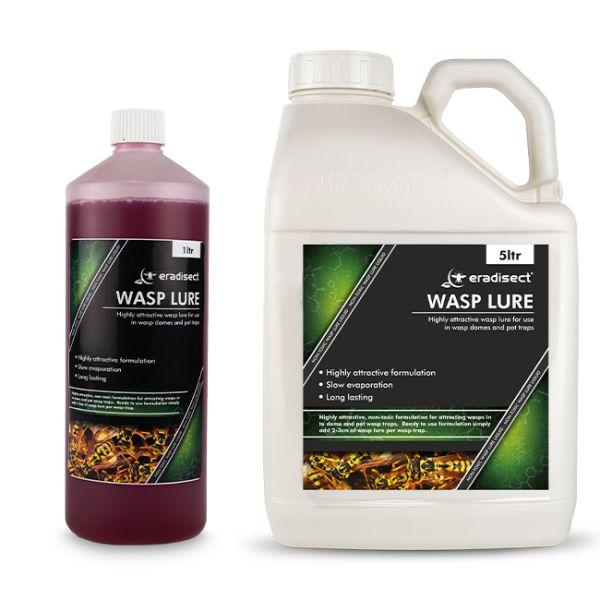Professional Wasp Attractant for Wasp Domes
- Agrisense or Eradisect professional-formulated non-toxic liquid wasp bait
- Attractive to most common wasp types and nuisance flies
- Contains bee deterrent
- Ideal for re-charging all kinds of wasp dome traps and wasp bags
- Quantity discounts are available see pricing
€18.55 – €67.63Price range: €18.55 through €67.63 (ex.VAT )
| Quantity | Discount | Unit Price |
|---|---|---|
| 1 | 0% | €18.55 |
| 2 | 5% | €17.62 |
| 3+ | 10% | €16.70 |
| Quantity | Discount | Unit Price |
|---|---|---|
| 1 | 0% | €67.63 |
| 2 | 5% | €64.25 |
| 3+ | 10% | €60.87 |
Wasp Attractant Usage
Wasps cause risks in the height of summer. They can be dangerous if they sting pets or young children. Using our wasp attractant alongside our wasp traps, you can lure wasps into a trap that doesn’t let them out.
This ready-to-use powerful professional wasp attractant uses a new formula that reduces evaporation.
- Ready to use powerful wasp attractant.
- Use in combination with our wasp pots to attract them.
- It’s non-toxic and safe to use around the garden where pets and children may be present.
- A simple and easy-to-use solution for your use in our wasp and fly traps.
Usage
Here is some helpful guidance on utilising our wasp traps and wasp bait attractant lure to effectively manage and control wasp populations.
Summary:
- Dispense the wasp trap lure from the container into the base of the wasp dome trap until half full.
- Do not overfill
- Wipe away any spillage on the container and/or the trap thoroughly after use with a disposable cloth
- Dispose of cloth in a sealed waste container.
Our professional wasp traps and lures are a valuable resource for preventing the disturbances and panic caused by wasps to both people and animals. These traps and lures are designed to disrupt the communication cycle between foraging wasps and their nest, thereby reducing the number of potentially harmful wasps.
Wasps follow an annual lifecycle, with the early months from January to June marked by minimal issues as they concentrate on nest-building and larval feeding, contributing positively to the environment by controlling small garden insect pests. However, in the latter half of the year, typically from June through October, their behaviour shifts as they seek out sweet foods.
During this period, foraging wasps search for sugary substances and communicate their discoveries back to the nest, resulting in a continuous influx of wasps. The primary goal of wasp trapping is to prevent or disrupt this communication, ensuring long-term control.
Before assembling the trap, fill the yellow base with suitable wasp bait, such as our Eradisect or Agrisense wasp bait. The specially formulated professional bait is designed to lure worker wasps into the trap, from which they cannot escape. You can purchase this bait in either 1L or 5L bottles.
For maximum efficacy, store the wasp bait away from direct sunlight.
Trap Placement
When handling traps, exercise caution, as wasps may be present in the vicinity, posing a risk of stinging. While our wasp bait is non-toxic, it is important to keep children away from traps and their contents.
Ideally, position the trap along the flight path of the wasps, between their nest and the area you wish to protect (e.g., patio, BBQ area, pub beer garden). These flight paths can be challenging to pinpoint, so placing traps strategically around the protected area or in locations that divert wasps away from sensitive zones is an effective strategy.
If wasps are swarming around a specific area, such as a picnic table, placing the trap on the table and allowing the wasps to enter can effectively control communication between the nest and the food source.
You can also place traps near entry points into buildings to reduce the number of wasps entering.
Tips for Effective Trapping
- Always ensure the traps remain well-supplied with Entopest wasp bait; a dry trap will not effectively mitigate the risk posed by wasps!
- Periodically remove dead wasps when replenishing bait
- Traps should be visible to the wasps to encourage them to enter
- In public areas, consider the risk of interference with traps
- If a large number of wasps are captured, it may indicate the proximity of a nest. If a nest is found, consider using a wasp killer foam for control
- Remove other food sources to make the trap more attractive
- Take the wind direction into account; the trap is most effective when placed downwind of the protected area.
End-of-Season Maintenance
Once wasp activity has ceased for the season, it is advisable to remove, clean, and store the traps indoors. This helps prevent damage to the traps during inclement weather and ensures they are ready for use in the next season. Exercise caution when checking or removing traps to ensure no live wasps are present, as they may pose a risk.
| Select Option | Wasp Attractant 1 litre, Wasp Attractant 5 litre |
|---|
